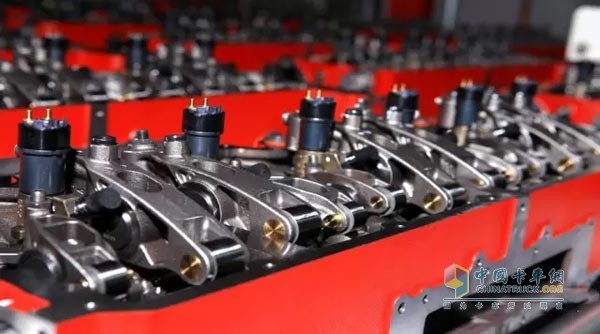In the absence of global oil resources and environmental pollution, energy-saving and emission-reduction are responsibilities and obligations. It has become the consensus of all people and “fuel-efficient†has increasingly become the strongest voice among car owners. Technology leads the future. Cummins ISG inherits Cummins 100-year power essence, which is jointly developed by Cummins globally, including 17 R&D institutions including USA, UK, France, etc., and more than 1,000 R&D personnel. With the perfect leading-edge fuel-saving technology, it brings optimal efficiency and practical benefits to owners. . Cheats 1: XPI Ultra High Pressure Injection System - Atomization, Full Burning, More Fuel Saving The ISG engine adopts the unique global XPI ultra-high pressure injection system. During the operation process, multi-level fuel injection can be achieved. The maximum injection pressure of 2000 bar can be achieved, fuel atomization can be more fully achieved, and emissions and fuel consumption can be significantly reduced. Reduce fuel consumption by 2-3 liters, improve transport efficiency, and save fuel costs for users. Cheats 2: Engine "efficient and low-cost" design - low energy consumption and more fuel-efficient The "high efficiency and low energy consumption" design of the ISG engine is another magic weapon to save fuel. The highly integrated ISG engine lubrication and cooling system effectively reduces the waterway path by 30% and improves cooling performance. The low-pressure reduction design can reduce kinetic energy consumption. The power consumed by the pump operation is only 3 liters of displacement engine, and the energy consumption is also reduced to more than 50%. . Unique windshield and water tank integrated design, while applying electromagnetic silicon oil fan technology, to ensure the best cooling effect. Cheats 3: Patented Intelligent Speed ​​Control (LBSC) - Virtual Coaches Cummins proprietary technology LBSC (Load Based Speed ​​Control) intelligent speed control, by Cummins professional engineers through insite, VEPS software programming, intelligent programming settings, according to the vehicle operating environment intelligent control of engine speed, whether it is gentle driving, downhill or climbing can Provides excellent fuel consumption performance and driving performance. Each vehicle is like a virtual trainer designed to help drivers achieve fuel-efficient driving, ensuring that all drivers can drive fuel irrespective of their driving skill level. Cheats 4: Cummins C-Link System - Intelligent Management More Fuel Saving Cummins's world-leading C-link remote intelligent service system realizes intelligent fuel-saving management of the vehicle through matching management of vehicles, driving behavior management, and analysis and management of vehicle operations. Cummins C-link analyzes the route and vehicle configuration so that customers can choose a reasonable allocation of vehicle resources and make reasonable optimizations so that the fuel consumption of the vehicle can be minimized. At the same time, it records and analyzes various hazards during driving and leads to high fuel consumption and other driving behaviors to improve the driver's idle speed, rapid acceleration, full throttle, and other unsatisfactory driving behaviors, so as to ensure that the fuel consumption of the vehicle is reduced in an optimal manner.
"Gravity Die Casting. A permanent mould casting process, where the molten metal is poured from a vessle of ladle into the mould, and cavity fills with no force other than gravity, in a similar manner to the production of sand castings, although filling cn be controlled by tilting the die."
Sometimes referred to as Permanent Mould, GDC is a repeatable casting process used for non-ferrous alloy parts, typically aluminium, Zinc and Copper Base alloys.
The process differs from HPDC in that Gravity- rather than high pressure- is used to fill the mould with the liquid alloy.
GDC is suited to medium to high volumes products and typically parts are of a heavier sections than HPDC, but thinner sections than sand casting.
There are three key stages in the process.
Advantages
Gravity Casting Parts,Aluminum Alloy Gravity Casting Parts,Aluminum Gravity Die Casting Parts,Gravity Casting Aluminum Parts HSI INDUSTRIEL LTD , https://www.hsiindustriel.com
Cummins XPI Ultra High Pressure Injection System - atomizing, burning full and more fuel efficient 
Patented Intelligent Speed ​​Control (LBSC) - Virtual Coaches
Gravity Die Casting